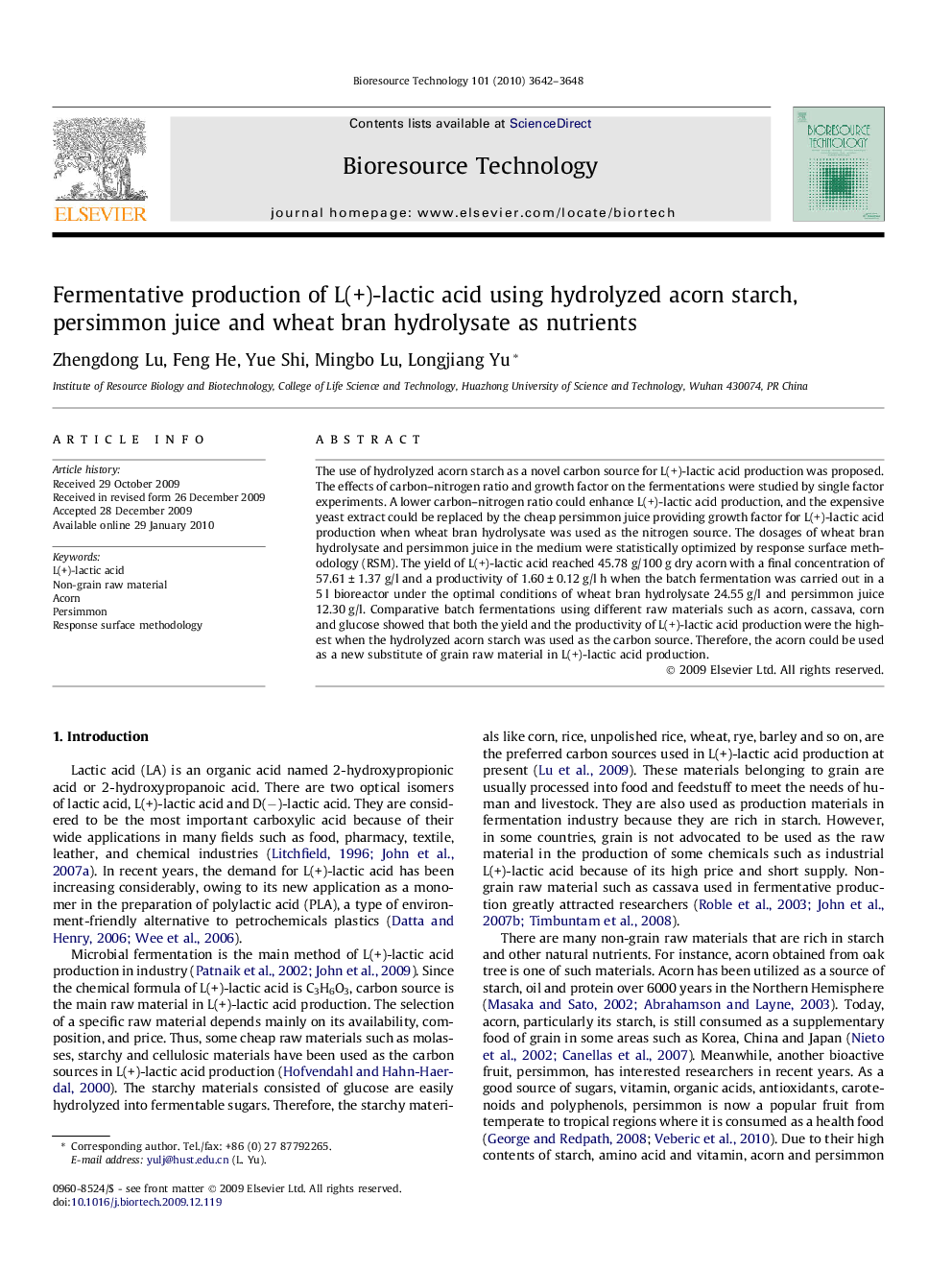| Article ID | Journal | Published Year | Pages | File Type |
|---|---|---|---|---|
| 683288 | Bioresource Technology | 2010 | 7 Pages |
The use of hydrolyzed acorn starch as a novel carbon source for L(+)-lactic acid production was proposed. The effects of carbon–nitrogen ratio and growth factor on the fermentations were studied by single factor experiments. A lower carbon–nitrogen ratio could enhance L(+)-lactic acid production, and the expensive yeast extract could be replaced by the cheap persimmon juice providing growth factor for L(+)-lactic acid production when wheat bran hydrolysate was used as the nitrogen source. The dosages of wheat bran hydrolysate and persimmon juice in the medium were statistically optimized by response surface methodology (RSM). The yield of L(+)-lactic acid reached 45.78 g/100 g dry acorn with a final concentration of 57.61 ± 1.37 g/l and a productivity of 1.60 ± 0.12 g/l h when the batch fermentation was carried out in a 5 l bioreactor under the optimal conditions of wheat bran hydrolysate 24.55 g/l and persimmon juice 12.30 g/l. Comparative batch fermentations using different raw materials such as acorn, cassava, corn and glucose showed that both the yield and the productivity of L(+)-lactic acid production were the highest when the hydrolyzed acorn starch was used as the carbon source. Therefore, the acorn could be used as a new substitute of grain raw material in L(+)-lactic acid production.
